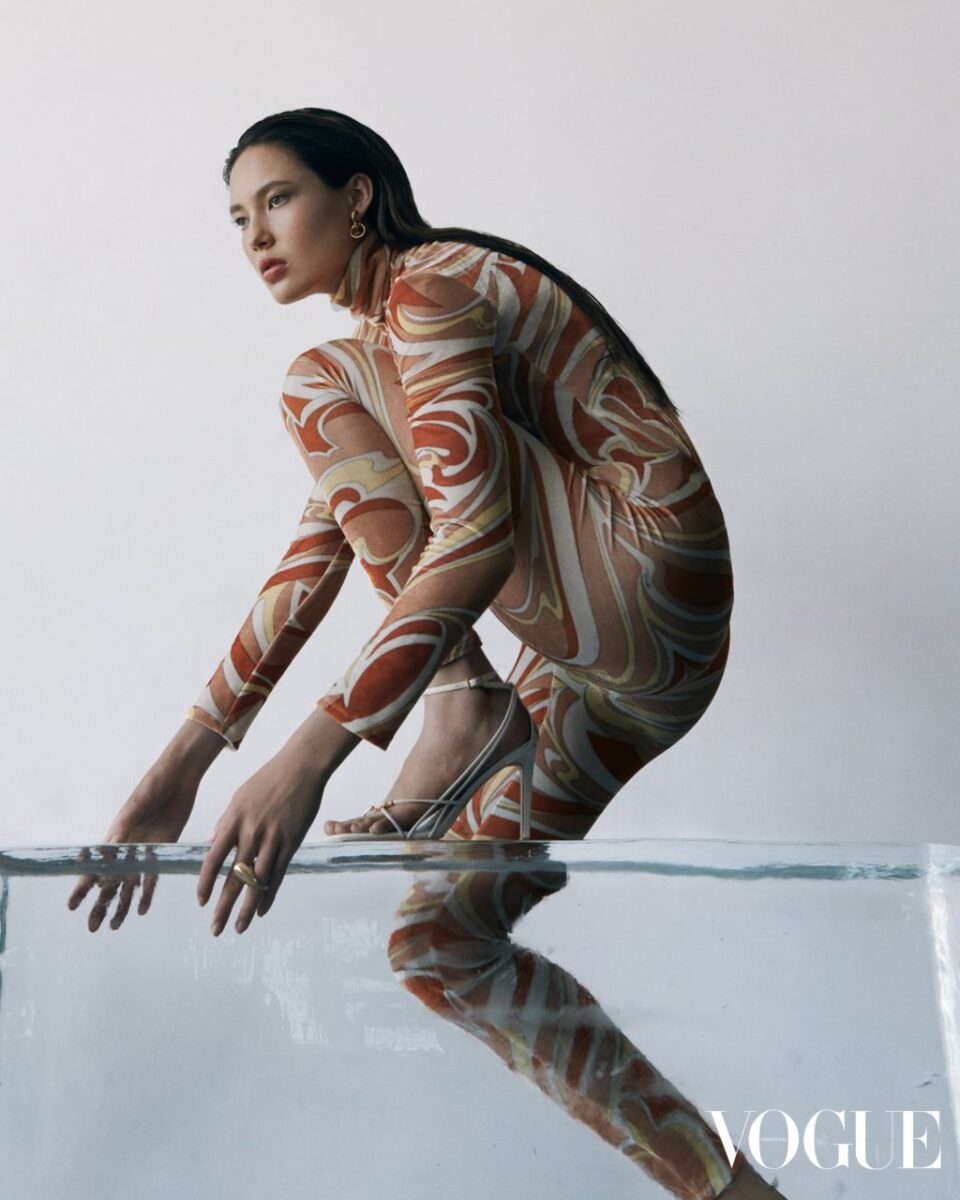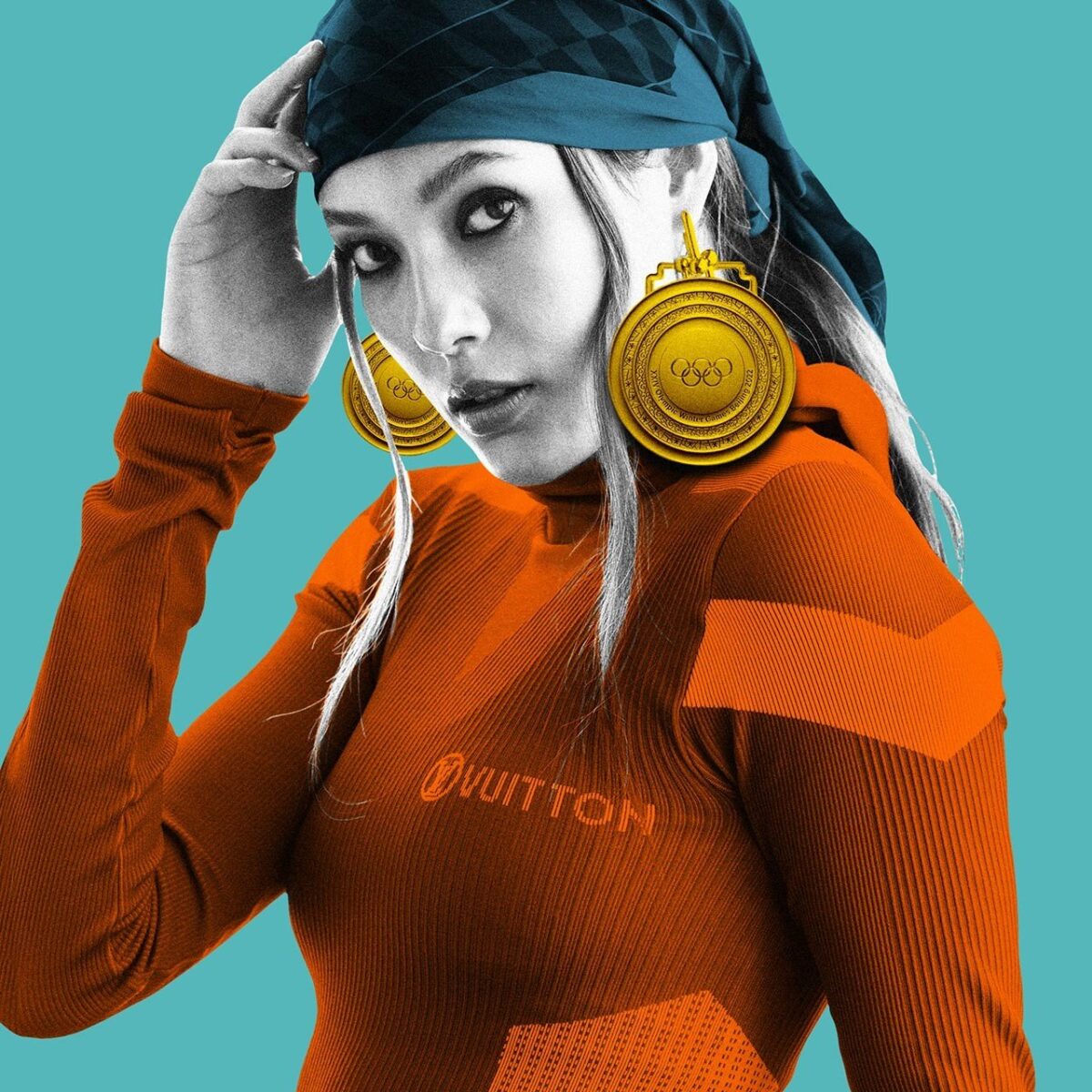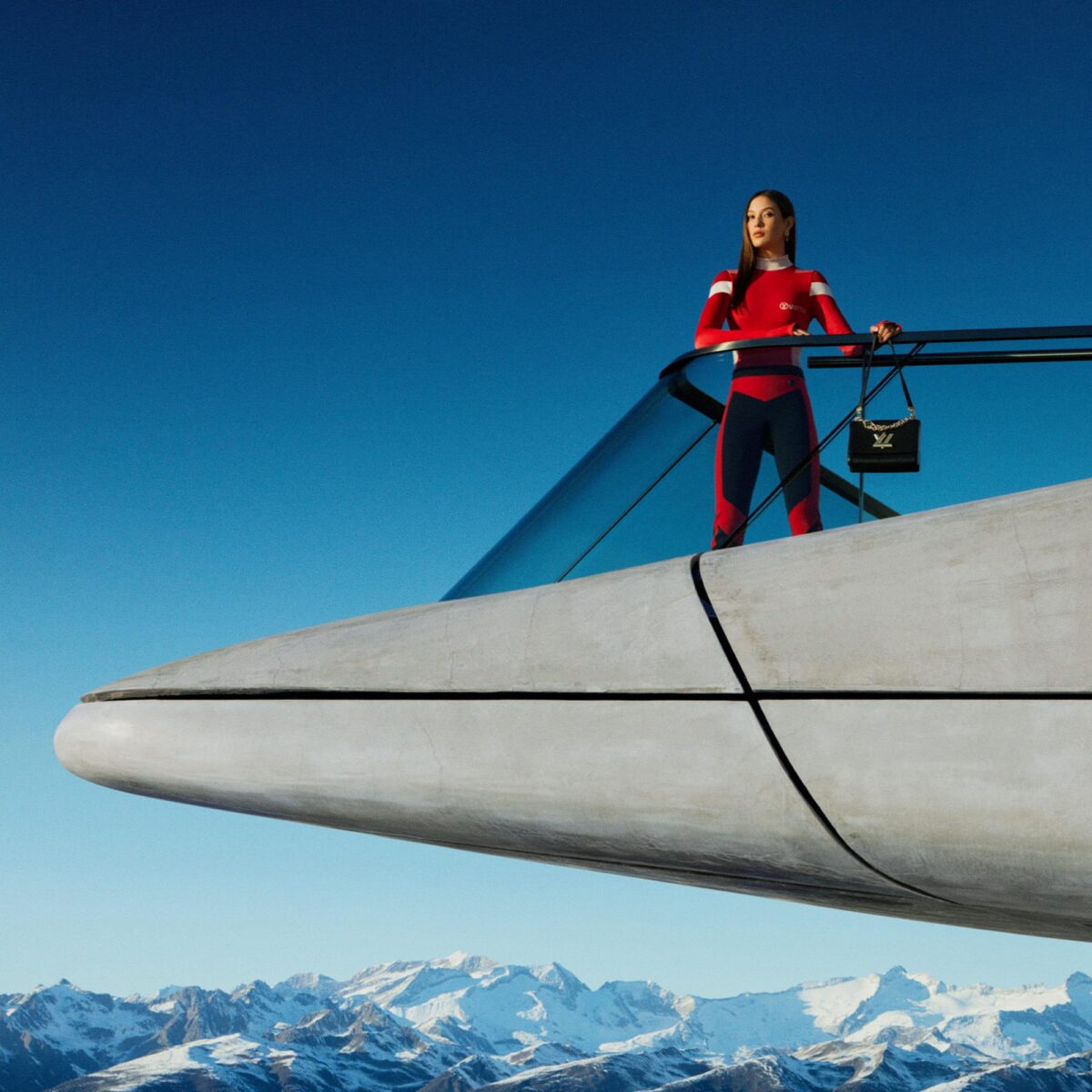女性運動員谷愛淩帶來的啟發

原刊載於My Body Knows【幸福解壓】公眾號
我一直覺得譚崔 (Tantra) 精神存在於人類生活的各個角落,冥想與靜心也不是道觀寺院裡才可以可以做的事情,只要一個人有觀照自我的意願、深入意識的決心,靜心與冥想隨時隨地都可能發生,而譚崔這一詞的梵文原意就是擴張的法門,通過觀照自我與深入意識,人人都能夠擴張其生命的可能性。
譚崔裡經常提到愛與恐懼兩者之間的關係,這也是人們主要的煩惱根源。探索熱愛與恐懼能夠為生命帶來深刻的洞見。
大家其實可能不知道,全世界有許多頂尖的運動員都有固定冥想的習慣,特別是講求耐力的馬拉松選手,他們需要對自己有持續深度的覺察,才能在這樣的過程當中持續超越自我,這通常是他們進入冥想與靜心的原因。我發現許多優秀的運動員都具備譚崔精神,他們對於未知與恐懼有別于常人的洞見,這也是為什麼他們能夠最大化自身潛能並超越挑戰和限制。
最近獲得全球媒體廣泛關注的奧運自由式滑雪金牌得獎人谷愛淩,年僅18歲的她曾經是一名田徑運動選手,長年每天跑步鍛鍊。她在諸多採訪當中展現了超乎年齡的智慧,紐約時報邀請她針對【恐懼】這個主題做分享,她的觀點我覺得和我理解的譚崔精神有很大的重疊之處,因此分享這篇文章給大家。

谷愛淩在紐約時報的採訪視頻裡提到,每個人都有恐懼,只是人們會假設別人沒有。做為一個年輕人,她也在瞭解自己是誰,而深入她與恐懼的關係是她瞭解自己的第一步。她是一個對腎上腺素上癮的人,她熱愛緊張的感覺,更喜歡去跨越它。感受那股刺激和那種獎賞,這是她投入滑雪的原因。她意識到自己生命大部分的亢奮經驗都來自於恐懼,因為它就是腎上腺素,而這是人類的共同經驗,比如一個人要去考試,突然你表現得很好,你的興奮程度會遠勝於一開始就知道自己會做得很好,雖然因為你很努力準備,結果並不是那麼令人驚訝,那份未知的感受,是令人上癮的。
從谷愛淩的文章裡不難發現與極限運動的訓練與譚崔工作十分相似之處,她對於恐懼、興奮與熱愛的描述,都可以放在人們深入愛與性這些生命的基礎經驗上。譚崔能量工作中會探索人的身體感知與大腦意識,也會通過呼吸與移動去激發別于常態的生理、情緒與心理模式,進而破除限制性的身心狀態,打開更多的可能性。
《紐約時報》2022年2月8日
谷愛淩只有18歲。生長於加利福尼亞的她,為母親的祖國中國出征,有望在北京拿下自由式滑雪U型場地技巧賽、坡面障礙技巧賽和女子大跳臺的三枚金牌。(本文中文版發表時,谷愛淩已經在女子大跳臺比賽中獲得冠軍。——編注)
谷愛淩與恐懼的關係是不斷變化的。她總會想到恐懼。她習慣寫日記,她說,自己手寫下的一些主題就是關於各種形式的恐懼。
應《紐約時報》邀請,谷愛淩寫下了她的恐懼觀——她如何看待恐懼,如何應對恐懼,以及她希望如何戰勝恐懼。
Eileen Gu is only 18. Born and raised in California, Gu competes for her mother’s native China, where she hopes to win three gold medals: in halfpipe, slopestyle and big air.
Gu’s relationship to fear is evolving. She thinks about it a lot. She keeps a diary, and some of her handwritten entries, she said, are devoted to the subject of fear, in all its forms.
At the request of The New York Times, Gu wrote down her thoughts on fear — how she views it, how she manages it, how she hopes to conquer it.
谷愛淩原文

在我18年人生中的後10年,我都與恐懼進行了一場動盪不安的戀愛。我是一名職業自由式滑雪運動員,雙尖滑雪板、22英尺高的U型池和轉體兩周的動作就是我腎上腺素的主要來源,那是極限運動真正令人著迷的內核。
就像所有讓人迷戀的情人一樣(由於缺乏現實經驗,至少是我在小說裡讀到的那種),這位重要的另一半可能是……善變的。「恐懼」實際上概括了三種不同的感官體驗:興奮、不確定性和壓力。我已經明白,如果意識到並積極利用這每一種感官中的微妙指示,會對成功有幫助;如果忽視它們,往往就是受傷的先兆。
雖然極限運動員很容易被貼上無畏或不走尋常路的標籤,但其實,我曾花無數個小時在海綿池(填滿了泡沫和顆粒)和氣墊上(想像一種巨型的Slip ’N Slide滑水道)想像做那些技巧動作的畫面,並進行練習。把自己置於危險境地從生理上說是違背天性的,雖然我們盡一切努力做好了身體狀態上的準備,但再多的所謂安全訓練,也不能與無情的雪坡相提並論,在一個劇烈顛簸將我們拋入空中之後,它就直奔我們而來。我們不是忽視恐懼,而是通過探索深刻的自我意識和深思熟慮的風險評估,與恐懼建立獨特的關係。
FOR THE LAST 10 OF MY 18 YEARS, I’ve pursued a tumultuous love affair with fear. I’m a professional freeskier, and twin-tipped skis, 22-foot halfpipes and double-cork rotations are my main sources of adrenaline, the truly addictive core of extreme sports.
Like all bewi譚崔hing lovers (at least the ones in the novels I read, for lack of real-world experience), this significant other can be … mercurial. “Fear” is really an umbrella term for three distinct sensations: excitement, uncertainty, and pressure. I’ve learned that the nuanced indicators of each of these feelings can be instrumental to success when recognized and positively leveraged, and harbingers of injury when ignored.
Though it’s easy to label extreme sport athletes as fearless or capricious, the countless hours I’ve spent visualizing tricks and practicing them in foam pits (foam. particles. everywhere) and on airbags (think giant Slip ’N Slide) suggest otherwise. It’s biologically counterintuitive for us to place ourselves in positions of risk, and while we make every effort to physically prepare, no amount of metaphorically safety-netted practice can equate to the unforgiving snow slope that rushes up to meet us after a steep kicker launches us into the air. Instead of ignoring fear, we build unique relationships with it by developing a profound sense of self-awareness and making deliberate risk assessments.
這個過程先從想像那個畫面開始。在嘗試一個新技巧之前,我喉嚨底部和膈肌頂部之間的胸口會升起一陣緊張。我深吸一口氣,閉上眼睛。我想像著在巨型起跳坡道中上升,伸展雙腿以將騰空升力最大化。然後,我看到自己反向扭轉上半身,做出我想要的翻轉動作,產生力矩,直到我再讓身體從另一個方向轉回來。
現在,在我的腦海裡,我已經飛了起來。我可以在看到起跳點的背面之後,立刻轉體將視線投向頭頂萬里無雲的天空。在我聽來,風也是一種音樂,每次360度轉體都為我的動作帶來了音樂節拍。當我的雙腳在中途落下,我將身體轉入第二個空翻前的一瞬間,我看到了落地點。我想像著雙腿不斷擺動,身體回到面向前方的姿勢,將重心放在靴子前頭著地。轉體四周。我面帶微笑。然後睜開眼睛。
想像結束後的一剎那,堵在我胸口的疙瘩終於撲騰著舒展開來——就像化繭成蝶那著名的蛻變終章。隨著腎上腺素而來的興奮,就是我真正熱愛和沉迷的東西。對安穩完成動作的自信,對即將到來的未知體驗的興奮,這兩者之間那種搖搖欲墜的平衡讓我欲罷不能。我聽說這種狀態被稱為「化境」(the zone),去年秋天,當我成為歷史上第一個完成前空翻兩周加轉體四周的女性滑雪運動員時,我的確進入了那樣的狀態。

The work begins with visualization. Before I attempt a new trick, I feel a tightening high in my chest, between the base of my throat and the top of my diaphragm. I take a deep breath and close my eyes. As I ascend the gargantuan takeoff ramp, I imagine extending my legs to maximize lift. Then I picture twisting my upper body in the opposite direction I intend to spin, generating torque before I allow it to snap back the other way.
Now, in my mind, I’m airborne. I see the backside of the takeoff immediately, then my flip draws my vision to the cloudless sky above me. My ears register the wind as a kind of song, every 360-degree rotation providing the beat to the music of my motion. As my feet come under me halfway through, I spot the landing for the briefest of moments before I pull my body into the second flip. I imagine my legs swinging under me as I return to a forward-facing position and meet the ground with my weight in the front of my boots. 1440 degrees. I smile. Then I open my eyes.
In the split second following my visualization, the knot in my chest flutters and spreads — those famous butterflies reaching their final stage of metamorphosis. Excitement, the child of adrenaline, my true love and addiction. That tantalizingly precarious balance between confidence in my ability to execute the trick safely and excitement for the unpredictable experience to come. I’ve heard this state called “the zone,” which is indeed where I was when I became the first female skier in history to land the double cork 1440 last fall.
遺憾的是,猶豫往往很容易將信心壓倒。沒有盡善盡美的準備,我會掌心出汗,把那個緊張的疙瘩咽進肚子,使得每一次呼吸都愈發困難。那種感覺並非慌張,而是某種類似於畏懼的東西。每一個進化的本能都在呼喊,危險!若是我選擇性地忽略這個安全機制,那我的身體或許就會在空中不受控制,轉體變形,讓我不得不出於恐懼為落地的衝擊做好準備,因為全身心投入這樣的動作可能會以災難告終。每一位元自由式滑雪運動員的終極目的,就是要認清興奮和不確定性之間的細微差別,這樣才能在拿出最佳表現的同時,最大限度地降低受傷風險。
最後,還有壓力這一有著多種釋放形式的動力源泉。一個人的壓力體驗——顯然它是「恐懼」最主觀的一面——會受個人經歷和觀念的影響。親朋好友的期望、競爭的衝動、甚至是贊助的機會,都可能製造出高壓環境。對於能克服壓力的鬥士來說,壓力可能是一種積極的力量,但壓力也可能成為失利的決定性因素。
然而,運動員能否抑制或是增強「證明自己」的天生欲望,很大程度上取決於信心。隨著步入成年,我能夠依靠提升自尊和減少對外界認可的需求來應對壓力,對此我感到十分自豪。無論是一個人獨處,還是面對全世界的觀眾,我都專注於感恩、觀察、以及這項運動帶給我的快樂。雖然我對自己和世界的看法在不斷變化,但有一點是肯定的:無論時間如何流逝,面對恐懼,我總是一個無可救藥的浪漫主義者。
It doesn’t take much, unfortunately, for uncertainty to override confidence. Imperfect preparation moistens my palms, pushes that tight spot down into my stomach and makes each breath shallower than the last. The feeling isn’t panic, but something like dread. Danger! cries every evolutionary instinct. If I should choose to look past this safety mechanism, my body may act autonomously in the air, twisting out of the rotation and forcing me to brace for impact out of fear that full commitment to the trick may end in disaster. Every freeskier’s goal is to recognize the minute differences between excitement and uncertainty in order to maximize performance while minimizing the risk of injury.
Finally, there’s pressure, an energy source that can be wielded in many ways. One’s experience of pressure — by far the most subjective facet of “fear” — is affected by personal experiences and perspectives. Expectations of family and friends, a competitive streak, or even sponsorship opportunities can provide the scaffolding for a high-pressure environment. Pressure can be a positive force for competitors who leverage it to rise to the occasion, but it can also single-handedly dictate competitive failure.
But whether athletes alleviate or compound their innate desire to “prove themselves” depends largely on confidence. As I enter my early adulthood, I’m proud of the work I’ve done to cope with pressure by bolstering my self-esteem and minimizing my need for external validation. I focus on gratitude, perspective, and on the joy this sport brings me, regardless of whether I’m alone or in front of a worldwide TV audience. Though my views of myself and the world are constantly evolving, one thing is for certain: no matter how much time passes, I’ll always be a hopeless romantic when it comes to fear.
